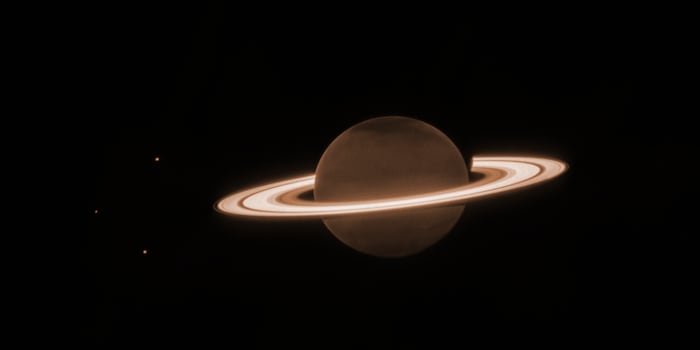
Saturn now at 274 moons
The gas planet Saturn not only has a prominent ring system. It now also leads the list of planets with the most moons by a large margin. As many as 128 new moons of Saturn have been discovered.
The Lord of the Rings is now also the Lord of the Moons. The gas planet Saturn is the star among the planets in the solar system. Everyone knows it because of its distinctive ring system. Now 128 new moons have been discovered on the ringed planet, as the International Astronomical Union (IAU) announced officially on 11 March 2025. This makes Saturn the undisputed leader as the planet with the most moons in the solar system. With 146 confirmed moons to date, the ringed planet was already well ahead of Jupiter, with which it has been in eternal competition and which currently has 95 known moons.
Mercury, Venus, Earth, Mars, Jupiter, Saturn, Uranus, Neptune - these are the names of the planets in the solar system if you list them from our day's star from the inside to the outside. Saturn in 6th place is one of the outer planets and takes around 30 years to orbit the sun. While Mercury, Venus, Earth and Mars are rocky planets with a solid surface, the other four are gaseous planets, which are more similar in composition to the sun.
The observations that led to the new moons of Saturn were initially carried out between 2019 and 2021 by astronomers from Taiwan, Canada, the USA and France. They used the Canada France Hawaii Telescope (CFHT), a 3.6-metre reflector telescope located on the extinct volcano Mauna Kea at an altitude of 4,200 metres in Hawaii. The MegaCam, a CCD camera with 378 megapixels installed on the telescope, was used. In the first observation runs, 64 new moons of Saturn were discovered. In follow-up observations in 2023, another 64 were added, resulting in a total of 128 new moons.
All of the newly discovered objects belong to the class of irregular moons. They are only a few kilometres in size and are presumably fragments from collisions of earlier moons, possibly also from comets that passed through Saturn's sphere of influence. The researchers assume that moons that were captured by the gas giant around four billion years ago collided and left behind small fragments. The new additions are located at relatively large distances from Saturn and therefore have longer orbital periods of up to three years.
In contrast, there are also inner moons that form in Saturn's rings, among other places. Due to resonance effects, not all orbital orbits around Saturn are possible. Material then piles up at the edges of forbidden zones and constricts to form small satellites.
At 5150 kilometres in diameter, Titan is Saturn's largest moon. In the solar system, only Jupiter's moon Ganymede is larger than Titan at 5262 kilometres. Both moons are not only larger than the Earth's moon (3474 kilometres), but even larger than the smallest planet Mercury (4880 kilometres).
Saturn's mighty ring system makes it one of the most fascinating and beautiful objects in astronomy to observe through a telescope at least once in your life. The instrument doesn't even have to be that powerful, but ordinary binoculars are not enough to recognise the rings as such.
Spectrum of Science
We are partners of Spektrum der Wissenschaft and want to make well-founded information more accessible to you. Follow Spektrum der Wissenschaft if you like the articles
Originalartikel auf Spektrum.de
Experts from science and research report on the latest findings in their fields – competent, authentic and comprehensible.
From the latest iPhone to the return of 80s fashion. The editorial team will help you make sense of it all.
Show all